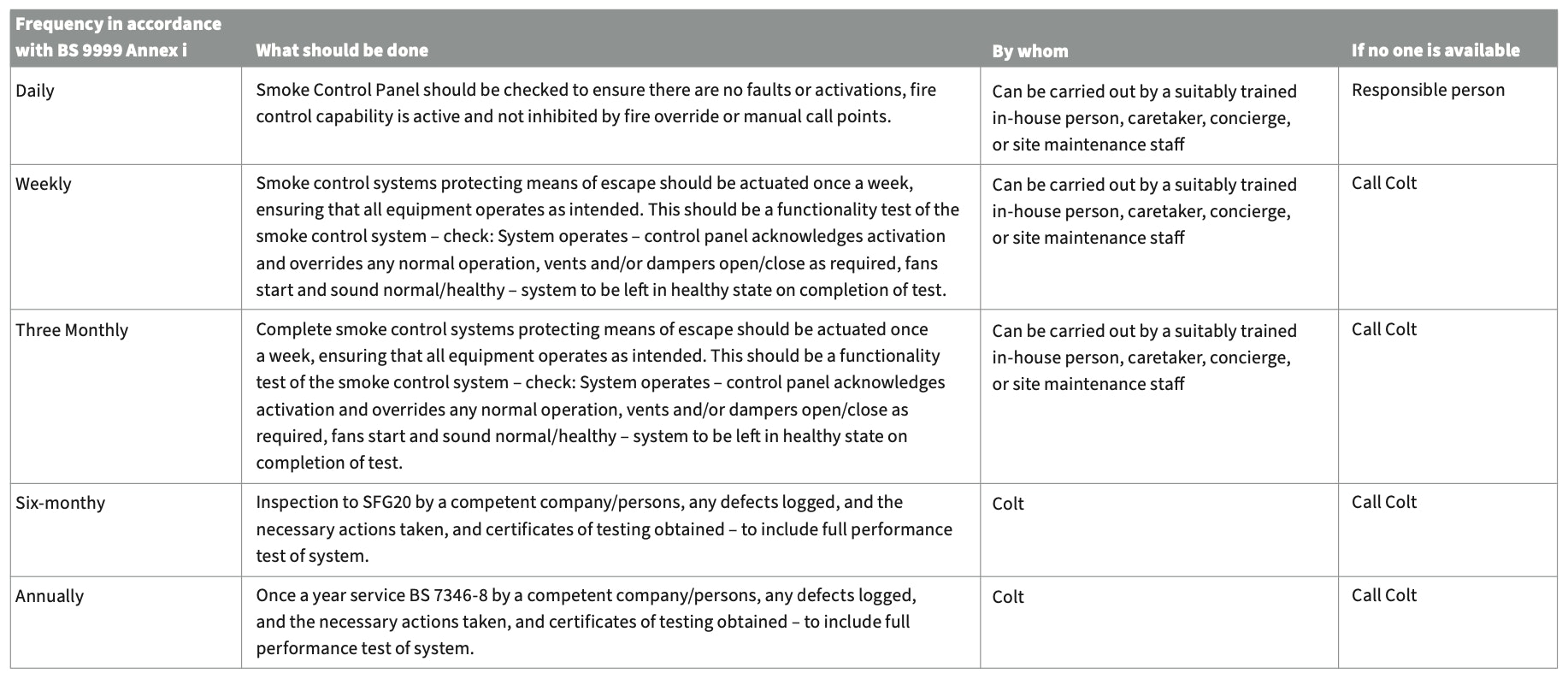Under The Regulatory Reform (Fire Safety) Order 2005 (RRO), the “Responsible Person” (typically a building owner and/or operator) must ensure their smoke control systems are maintained in an efficient state, are in efficient working order and in good repair at all times. If this is you, it is your responsibility to check that contractors have the qualifications, accreditations and training to work in accordance with the latest regulations. The Department for Levelling Up, Housing and Communities (DLUHC) suggests that the “smoke control system should be maintained by a competent person who is familiar with the fire engineering performance specifications of that specific system”.
The “Responsible Person” must also keep an accurate record of any maintenance done to the system. In the event of a fire, these records may be requested, for example, to make an insurance claim.
If you are in charge of building or fire safety maintenance, we understand it is difficult to stay on top of the changing building regulations and all the different tasks that have to be completed during the year. That’s why we’ve put together this handy checklist that tells you what maintenance actions need to be taken when and by whom to ensure compliance with the law.
View it in the table below or download it here.
Why maintaining smoke ventilation maintenance is so important
Smoke control systems or automatic opening vents (AOVs) are considered life safety equipment and are designed to protect people and ensure building safety. Smoke ventilation systems vent the smoke, heat and fumes that are emitted during a fire out of a building, allowing building occupants to safely escape in the vent of a fire or for firefighters to reach the seat of the fire quickly and safely.
Smoke system design varies according to the property, however, they are generally placed on roofs and wall spaces that are structurally sound. When heat and smoke detectors are triggered, the smoke vents open automatically, keeping the smoke buoyant and moving out of the building.
It is vital that smoke is efficiently removed from buildings for the following reasons:
- Smoke is comprised of components that can be lethal if inhaled. These components include:
- Particles of burnt and partially burnt substances that can bypass the respiratory system’s defences and enter the lungs.
- Toxic gases such as carbon monoxide which can be deadly even in small quantities.
- Vapours that are flammable and can ignite, or poisonous if inhaled.
- Fire can reduce oxygen levels in two ways. The first, by consuming the oxygen and the second, by displacing the oxygen with other gases, this is called Hypoxia.
- Whilst smoke systems are principally classified as life safety systems, they also facilitate firefighting which becomes more dangerous and difficult in a smoke-logged building.
To ensure that your smoke control systems are following the latest maintenance regulations, speak to our service specialists today.

